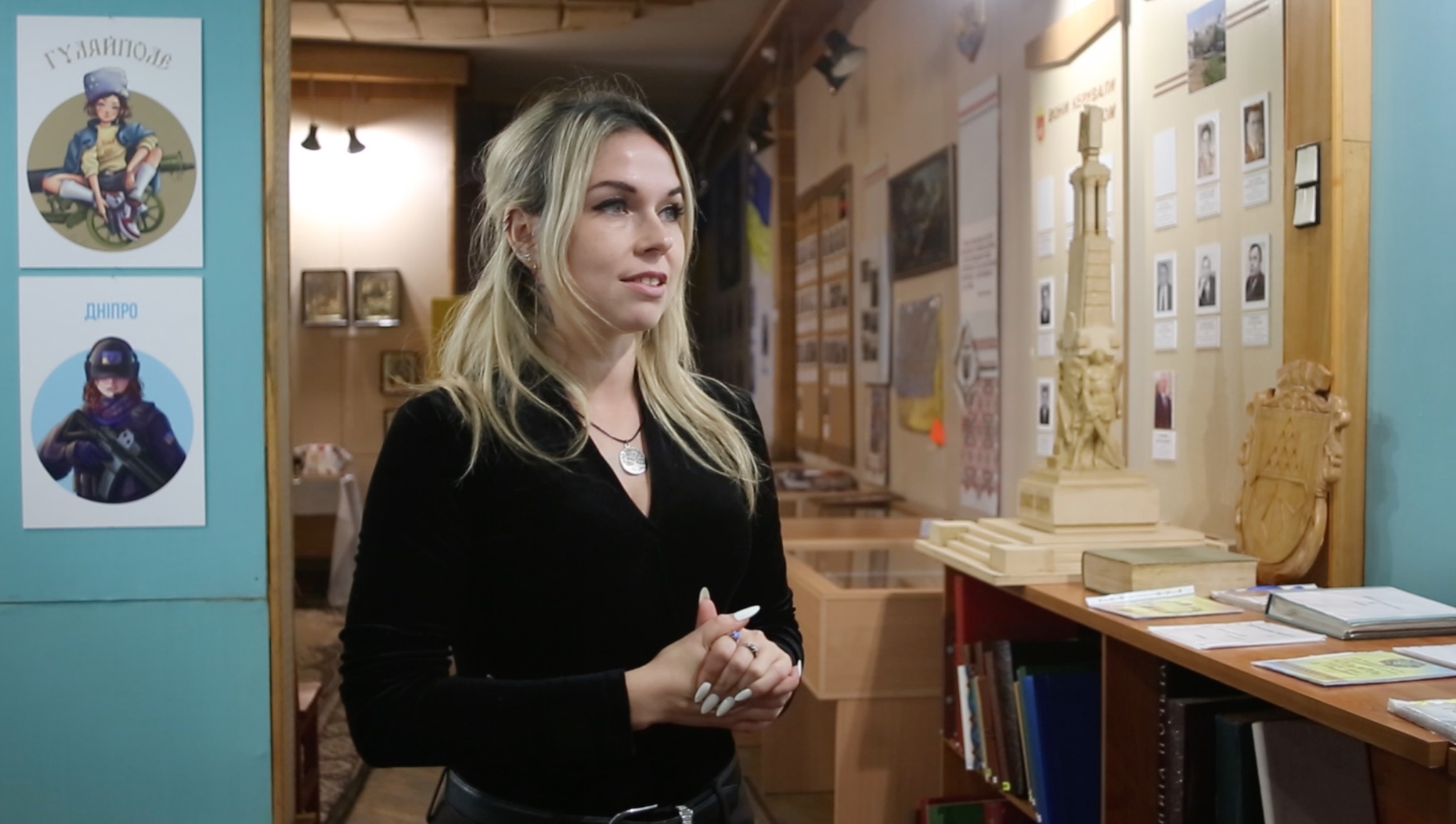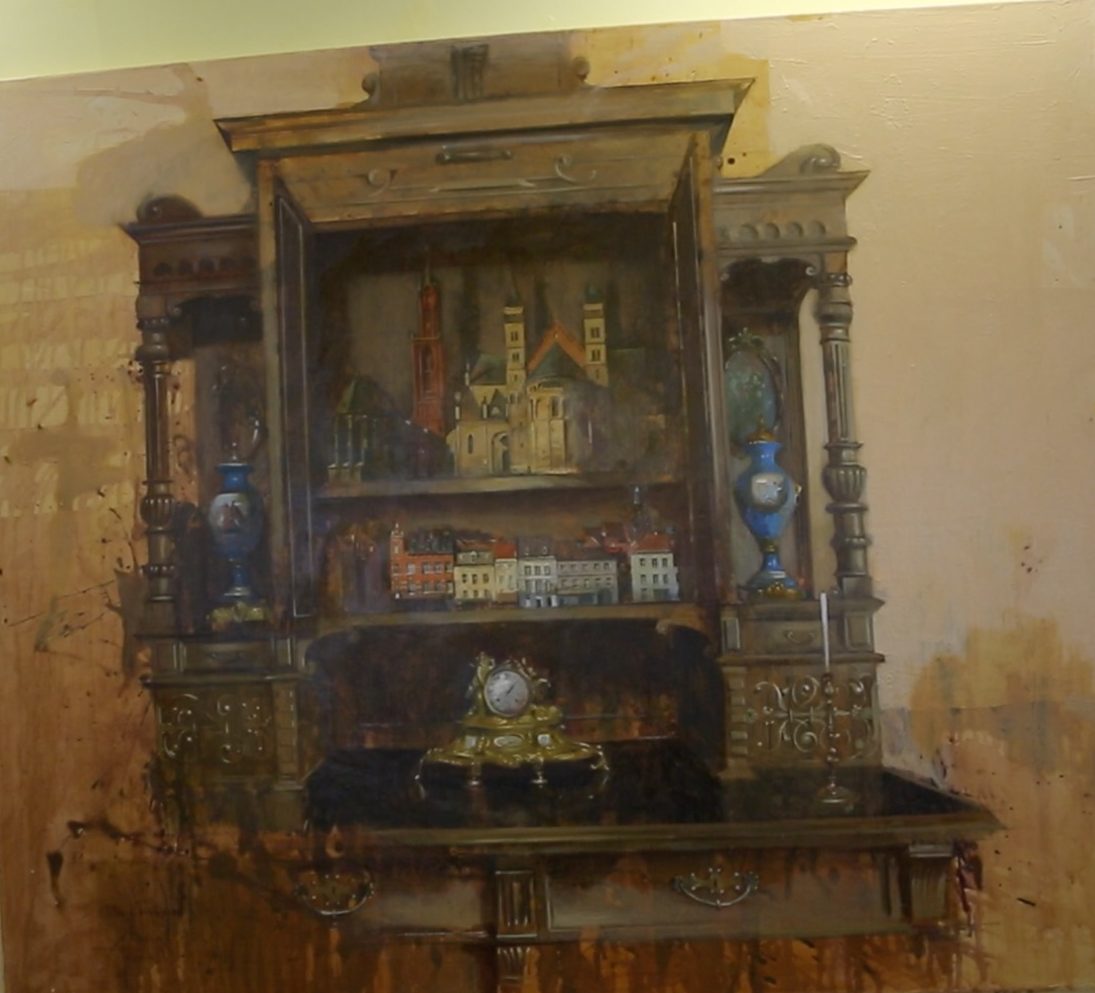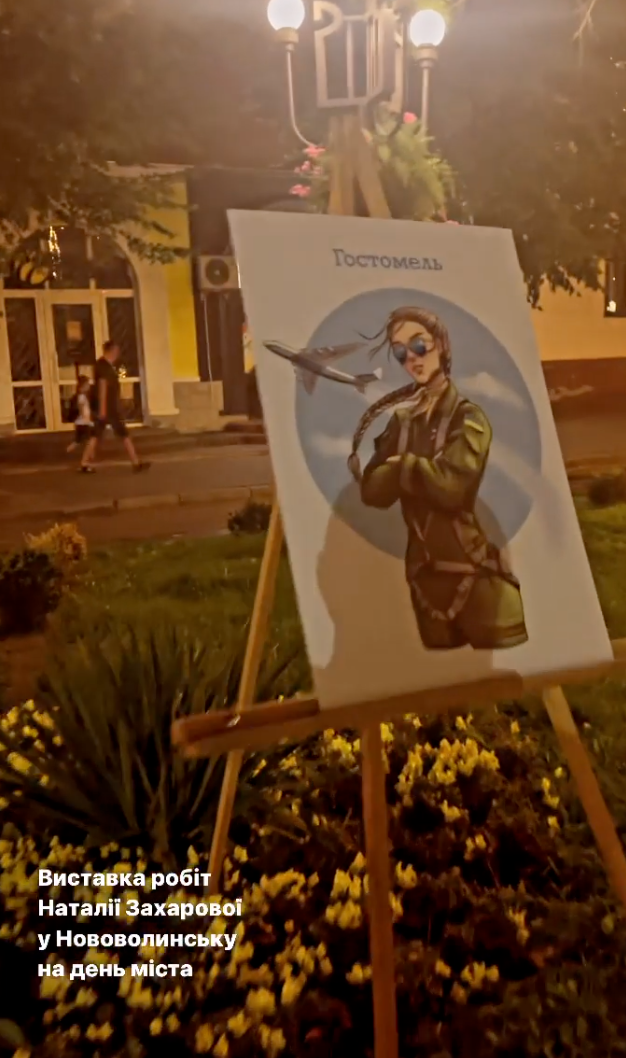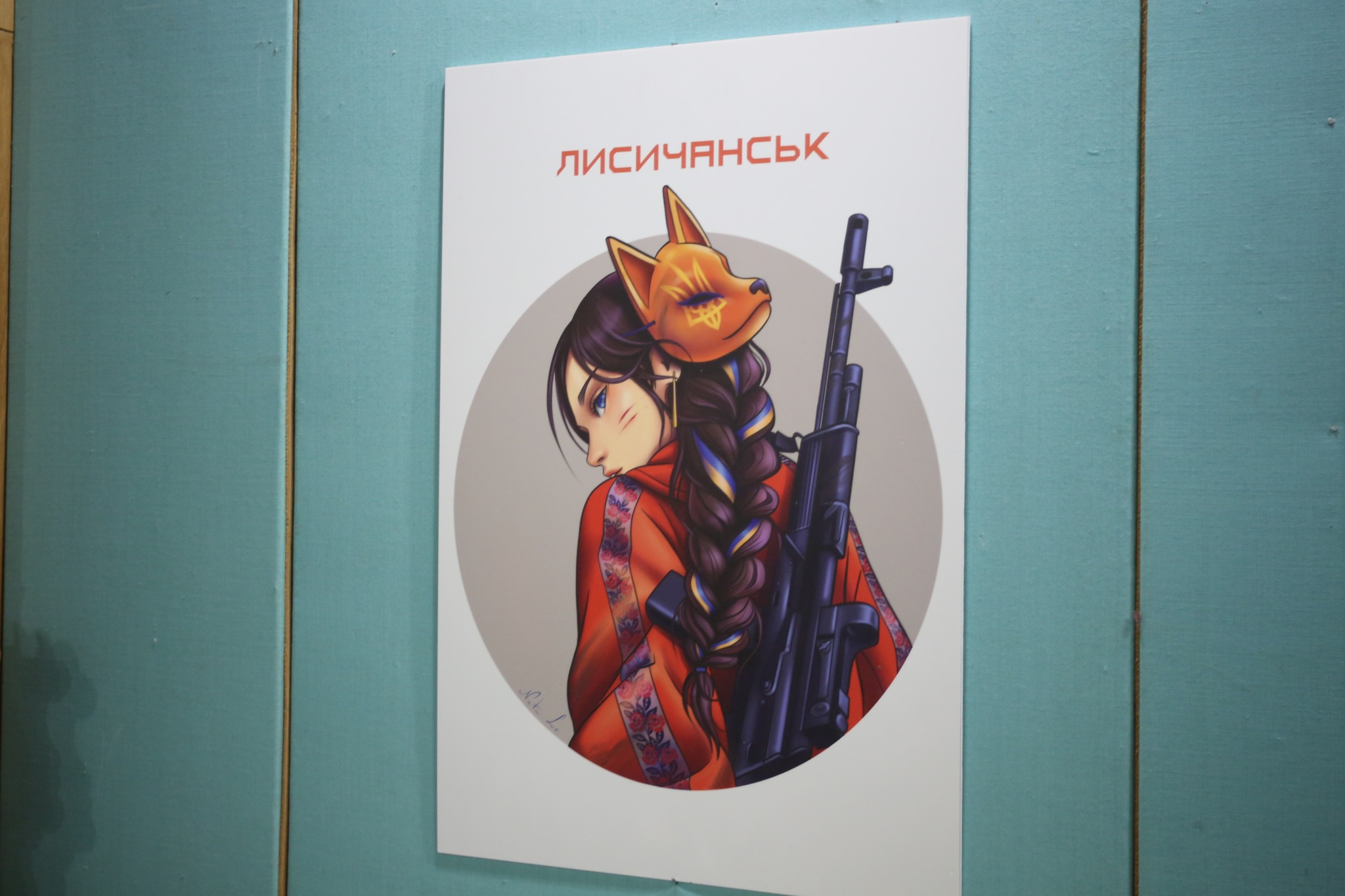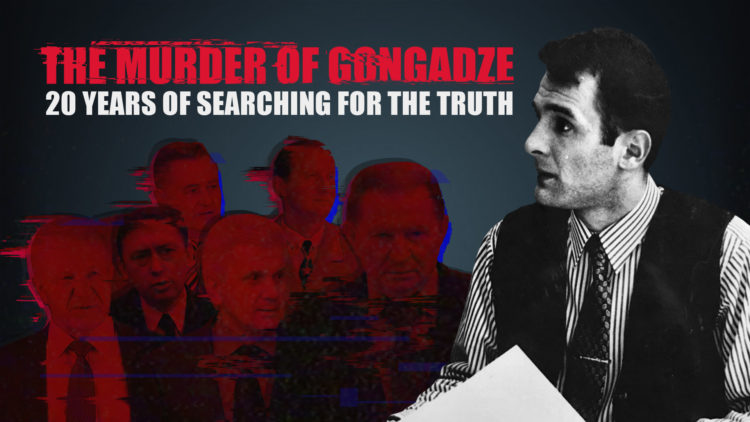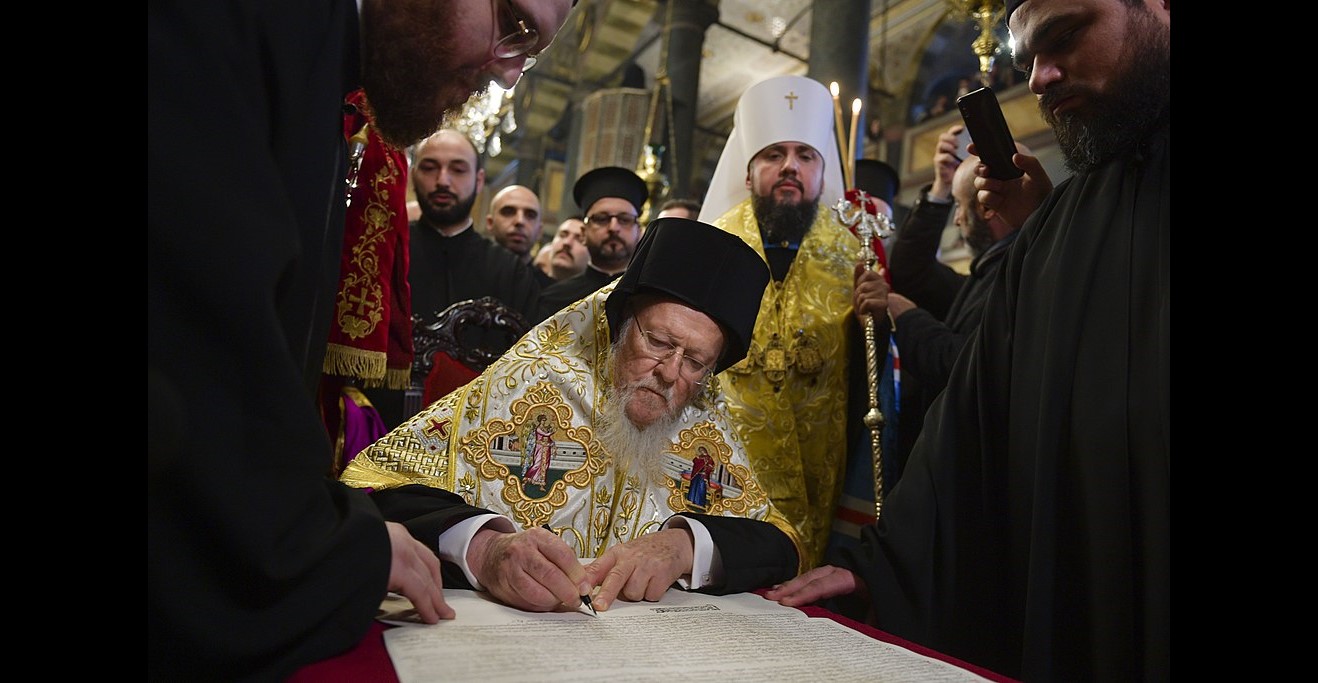“Nearly no other town with a population under 100,000 has such a concentration. Dozens of initiatives in a variety of fields work to support the military and civilians during the war,” Serhiy Kornyliuk, a city development consultant who moved back to Novovolynsk from Kyiv, says.
Local museum serves as a sobering reminder that modern war is nothing new
Until one visits the local museum, Novovolynsk appears quiet and ordinary. Russia’s full-scale invasion in 2022 is only one chapter in the town’s dramatic history and tragedies brought on by Russia’s intrusion.
31-year-old Iryna Kostiuk has been the director of the Novovolynsk History Museum for seven years, continuing to work here after the Russian full-scale invasion began. A permanent exhibition is open on a daily basis, along with new war-related exhibitions and projects made possible by the contributions of Ukrainians who relocated here from more dangerous areas.
In one of the museum’s corners is a portrait of Taras Shevchenko, the national poet of Ukraine. Although it does not seem particularly unusual, it was created under extreme circumstances. Ukrainian Kateryna Kochmar, who was exiled to Siberia by Soviet authorities after WWII, embroidered this portrait on the bedding on which she slept with twisted herringbone, by memory alone and without the aid of any images.
She pulled the threads from the stockings of the girls who were imprisoned alongside her in the Soviet labor camp. Upon her return to Novovolynsk after her term ended, she donated this portrait to the museum.
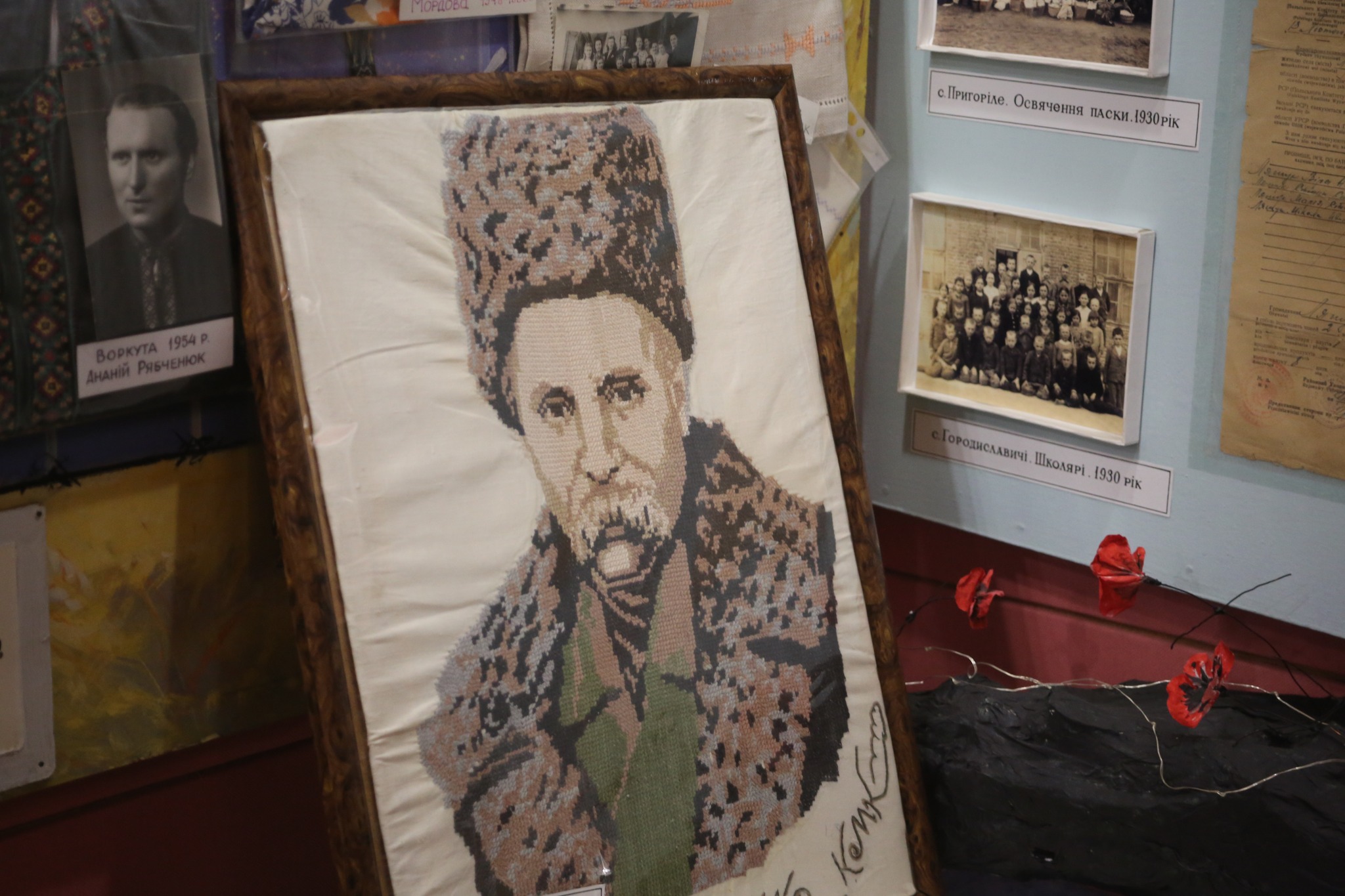
Hanna Ditchuk was exiled to Siberia at the age of 17 for reading the Ukrainian historian Mykhaylo Hrushevskyi.
As a reminder that they were only permitted one piece of bread and a liter of water per day, she returned home with two bags of dried bread. In Russian Siberia, she and other young girls and boys built railroads and cleared forests. While in transit, Russian authorities purposefully gave them salted fish and forbade them to drink water, so they drank from icicles instead.
According to Iryna, the museum compiles such stories in books, along with other stories of Ukrainians deported from the elm region of present-day Poland.
Many Ukrainians came to Novovolynsk after their exile in Siberia. It is because, under Soviet law, they were prohibited from returning to their home region for ten years following their release from prison. And Novovolynsk had jobs while the mines were being built. Consequently, a sizable portion of the Russian-speaking population also migrated to the city, to whom these people were subordinated.
“It was a city of contrasts: on the one hand, the Soviet Russian-speaking population, on the other hand, people who returned from camps in Siberia after being exiled for speaking Ukrainian and singing Ukrainian songs. Despite such contrasts, the city ultimately has remained Ukrainian-speaking,” Iryna says.
The topographer Yuriy Dyba first sparked a historical debate that Volodymyr the Great, a king of Ukraine-Rus (Kyivan Rus) was born in Budiatychi, one of five ancient villages on which Novovolynsk now stands. In another such village, Nyzkynychi, Kyiv governor Adam Kysel lived in the 17th century. He joined forces with Bohdan Khmelnytskyi, Hetman of the Ukrainian Cossack state, as a diplomat between Ukraine and Poland in an effort to reconcile Catholicism and Orthodoxy.
There was no church in Novovolynsk when it was being built in the 20th century. Now there are over 20 churches of different denominations. When the Metropolitan from Kyiv arrived, he presented them with a facsimile edition of the Peresopnytsky Gospel. This is the Gospel on which Presidents swear, and there are up to 300 copies in total. A single copy costs $5,000 and weighs five kilograms.
A restorer from Kharkiv helped the director of a local museum fulfill her long-lasting dream while he was waiting for the liberation of his region from Russians
The latest paintings by Kharkiv artist and restorer Artem Pohribnyi are on display on the museum’s second floor. Pohribnyi was forced to leave his hometown, which is located just 30 kilometers from Russia. In his paintings, “he tries to convey how much he misses his hometown,” Iryna observes.
He has now returned to Kharkiv, but during the first months of full-scale war in Novovolynsk, he helped Iryna in realizing her long-term restoration plans. It was a rare opportunity for a small town to receive such service from a professional, even though Iryna and Artem’s meeting was only possible because of the undesired war.
One of Artem’s paintings features Kharkiv in one eye and Novovolynsk in the other; these are his daughter’s eyes. On the other, a wooden locker contains his memories of home. Many of his works have already been sold.
“I traveled to Kyiv for two years in order to get on the restoration list [for 17th-century cultural artifacts], but it was extremely difficult. Under a government program, restorers service two museums annually for free,” Iryna adds, alluding to the fact that there are larger and more renowned museums than her museum in a small 50,000-resident town.
When the war began, Iryna first left with her child for Krakow and returned within one month. During that time, she let a deputy director of the Kharkiv museum stay in her Novovolynsk apartment.
“And then he tells me: I was walking to your place in Novovolynsk when I saw a colleague who is a restorer, also from Kharkiv. The concentration of qualified people from big cities was so high in small Novovolynsk,” Iryna comments.
The restorer Artem himself inquired whether there was anything to be restored in the Novovolynsk museum. In order to receive his salary from the Kharkiv Restoration Center, where Artem works, he needed to demonstrate activity. It was a win-win situation.
“Such a respectable person, with an international restoration license, with a bunch of exhibitions, suddenly asked us if he could restore something for free,” Iryna remembers.
Artem has been restoring a 17th-century shroud and a church gate from the five-domed church of Adam Kysil.
“[During the restoration] it was discovered that there were two additional colors on top of the original image. He concluded that this is the school of [Ukrainian 17th-century painter] Yov Kondzelevych,” Iryna explains.
Iryna and Artem also created a children’s room in the museum and held painting workshops for them. Many of Artem’s war-related works have already been sold.
Open-air exhibition about Ukraine’s resistance and postponed mines’ museum plans
During the Russian invasion, Nataliya Zakharchenko from Bucha created paintings in the genre of graphic design dedicated to each Ukrainian city. Its main theme is Ukrainian resistance and invincibility.
Initially, Nataliya’s paintings were displayed on the central avenues of Novovolynsk, “and it was just that all the displaced persons were taking pictures with paintings of their cities,” Iryna says, adding that the paintings were later moved to the museum. Zakharchenko initially published the pictures on her Instagram account under the name Nataliya Lee, and later the museum later agreed to have them printed in Novovolynsk.
First, she wanted to create it in the mine and went down to the mine together with colleagues.
“That plan failed, because the mine was not transferred to the city’s ownership, and plus it’s very expensive. Therefore, now I want to establish a virtual 3D museum complete with glasses, sounds, and smells.”
Iryna received calculations for her project, which turned out to be extremely costly, even if completed in the museum’s own space.
“Maybe I wanted too much. I wanted there to be sound, water, and taricons to give the impression that one was walking on coal. I visited the Museum of the Ukrainian Nation in Kyiv, and it’s very beautiful, with scents and wax figures. For example, as Volodymyr the Great sails, one can smell the grass and hear the splash of the boat as he sails,” Iryna recalls.
Iryna says that new grants were announced “to do all of this, but unfortunately, the war halted the plans.
She works not only with the museum, but also tries to do projects in city tourism. Iryna is currently planning a tourist route that will end at the taricon at sunset. She also tries to install glass boards in the locations of those already lost monuments and organizes an archeology club for children where they can have fun digging.
Comfy youth space opened during the war
Three months into the war, on 5 May 2022, the open space for youth called Novi Kryla (new wings) was opened. An old library was renovated by young people from the local youth center, which is now seven years old. This place offers free, comfortable space for youth socialization and self-development during the war. Furthermore, each month it organizes more than 15 events to raise funds for the army.
Here, amid wall-mounted posters about Ukrainian culture, we met with one of the center’s members, 18-year-old Mykhaylo.
“On February 24, I had no plans of going anywhere [abroad]. At the time, I was still enrolled in the Ukrainian Leadership Academy program(a year-long training platform of personal and social development for youth who have just graduated from high school – ed.) A month before the war, we were transferred from Kyiv to Ternopil, and we have been volunteering for several hours every day since the beginning of the war. Our students opened a total of 44 volunteering centers, where they, for example, packed tons of humanitarian supplies for Kharkiv.”
When the Academy’s program ended and Mykhaylo returned to his hometown, he was concerned that the youth center would become deserted. “At first, I thought everyone would leave, but it turned out to be the opposite,” he says.
“Everyone volunteered en masse in this spirit. Now we are co-working and giving lectures. Today, for instance, a lecture on anti-bullying was given to schoolchildren. Today, we’ll also feature an acoustic evening today. Our events are highly diversified. We recently held master classes on painting shopping bags, providing the participants with shopping bags and paint.”
Novi Kryla organizes movie screenings, debates, music nights, filming workshops, and other events to engage youth in the community. They offer a free film studio where anyone can begin creating their own video products, as well as a library with youth literature.
“We cooperate closely with the city council,” Mykhaylo says. “They provide space and support all of our projects.”
Their mural project Walls are not silent enriched the urban landscape with street art, focusing primarily on Ukrainian cultural and political themes. For instance, the mural about Ukrainian dissident Levko Lukyanenko includes his citation, “Those saying that [Ukraine] got our independence for granted do not know that we went through 10-year imprisonment and detention.”
“We gathered all the youth who used to draw random graffiti to give it more artistic meaning. They started creating modern street art together. When I was creating one of the murals, I was ecstatic when a pensioner passed by, looked at it and said, ‘God, that’s beautiful. It was a gray city, but now it’s so cool.’ I never expected any praise about our business from retirees. That’s understandable given our target demographic. Often, older people may not understand what we do, especially with the posters that we occasionally hang, especially those featuring our cherished [Ukrainian poet Taras] Shevchenko. This case surprised me,” Mykhylo says.
Spouses from Kyiv invite musicians to Novovolynsk to raise funds for military
Just across from the youth center is a brand-new café opened by a family of Kyiv-based musicians. Yuliya is the concert director for a number of Ukrainian artists, while her husband, Ihor, is a sound producer and artistic director for several well-known singers. The couple temporarily left their studio and moved to Novovolynsk because living in Kyiv had become more difficult. To emulate their lifestyle in Kyiv, they even opened a café with delicious coffee.
Despite the fact that the music industry in Ukraine had slowed down, the couple continued doing small music projects in Novovolynsk in order to raise funds for Ukraine’s military. Just near the entrance to their Mika café, they hosted concerts with Ukrainian artists, many of whom were visiting Novovolynsk for the first time.
Related:
- Whoever could, fled the Russians. We went back to Irpin to save the rest
- “The route to life.” How volunteers secretly rescued 75,000 from a city encircled by Russian troops
- Created in three days, Ukraine’s territorial defense ruined Russian plans to capture Kyiv
- How the fanciest pizzeria of Chernihiv fed 22,000 daily under Russia’s siege
- Ukraine’s secret to resisting Russia: resilienc
- Lviv Garrison Church chaplains help soldiers find God amid war. And a pair of good boots
- Man saved 1,000 people from hunger during the Russian siege of Chernihiv
- Ukrainian theology professor turned sniper tells how to hunt for Russian invaders
- No place like home. Meet the Ukrainians living in the ruins of their houses destroyed by Russia
- From retiree to millionaire: 7 stories of heroism during the war in…




